The horse race known as “The Most Exciting Two Minutes in Sports” delivers yet again! This time, the story of its improbable winner, California Chrome, provides inspiration for dairy breeders to believe that it’s possible to achieve lightning in a bottle. The story has hit every news outlet, but there’s a message for dairy breeders too.
![140504-kentucky-derby-california-chrome-wide-9a_8b4eb6ed0fc2cc443e9649cb2f4826f5[1]](https://www.thebullvine.com/wp-content/uploads/2014/05/140504-kentucky-derby-california-chrome-wide-9a_8b4eb6ed0fc2cc443e9649cb2f4826f51-1024x629.jpg)
Photo by NBC News
In May 2008, at the Fasig-Tipton Horse Sale for 2 year olds in training, an ownership group from Northern California purchased an undersized chestnut-colored filly named Love the Chase for $30,000. (Side note, this is the same Horse Auction Company that held the recent Day at the Derby Sale that averaged $37,000 US). The new ownership group eager to assess their investment shipped her back across country and took her to the racetrack.
Love the Chase ran so poorly in her first three races that she was dropped into an $8,000 maiden claiming race, the lowest rung at Golden Gate Fields, a track outside of San Francisco. When she won that race, the group met with her trainer Greg Gilchrist, and asked what should they do with her? His response “”If you can find somebody who will give you $8,000 for her,” Gilchrist said, “I’d get rid of her right now.”
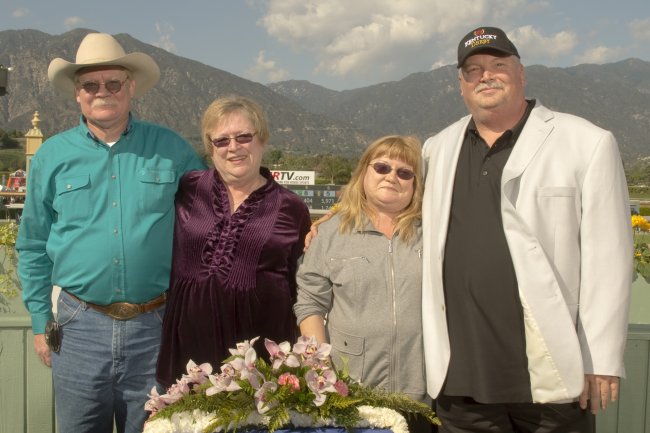
Steve and Carolyn Coburn; Denise and Perry Martin (Photo by Benoit Photo)
So the ownership group did that and two self-proclaimed “dumbasses” from the group, Steve Coburn, a press operator at a company that makes magnetic strips for credit cards and drivers’ licenses and Perry Martin, who owned a laboratory in Sacramento, Calif., that tests products such as air bags bought her for the sum of $8,000. Coburn bought her only because his wife nixed the idea of buying a plane—too expensive for a middle-class couple from Topaz Lake, Nevada and the other, Martin, was testing his luck in racing for the first time. The men had never met, but they were bound by their affection for the filly.With new trainer Monty Meier, they took the filly back to the track and matched her against $12,500 claimers. However, they got the same result. She finished last. They dropped her back down against the $8,000 claimers and returned to the track. She still finished dead last. Her future was in doubt.
Not to be dismayed by these poor results, the now registered “Dumb Ass Partners” shocked everyone when they announced that they planned to breed the undersized and underperforming mare. Like the show heifer that is at the bottom of every class.
Now this is where the story gets interesting for dairy breeders. Without any expertise, Martin began studying Love the Chase’s pedigree and discovered she was two generations removed from Mr. Prospector, a classic sire and successful sprinter in the 1970s, three generations removed from Northern Dancer, another top-line sire and winner of the 1964 Kentucky Derby, and although tracing the pedigree any further back would have struck most seasoned breeders as pointless, he found a connection to Swaps, winner of the 1955 Kentucky Derby.
After a failed attempt to breed Love The Chase to a top stallion, the owners paired their horse with Lucky Pulpit, a 10-year-old who had won three times in 22 starts. They paid a modest stud fee of $2,000. This time it took. Their breeding investment was now $10,000.
Almost a year later, Love The Chase gave birth to a 137-pound, chestnut-colored colt that had four white feet and a white blaze down his nose. In racing, white is known as “chrome.” So California Chrome was one of the names Coburn, Martin and their wives wrote on scrap paper and threw into a hat when they gathered one day at a restaurant. , Their waitress picked the winning name.
About two years later, California Chrome was ready to race, and Coburn and Martin wanted to run him in Southern California, where he would be matched against better competition. However, they needed a trainer. Art Sherman, the Dumb Ass Partners, learned, had been the exercise rider on none other than Swaps, the 1955 Kentucky Derby winner six generations removed from California Chrome. Who better to care for their horse, they decided, than a trainer who at 18 rode a railway car with Swaps and slept in the same boxcar with the horse on a three-day trip from Los Angeles to Louisville.
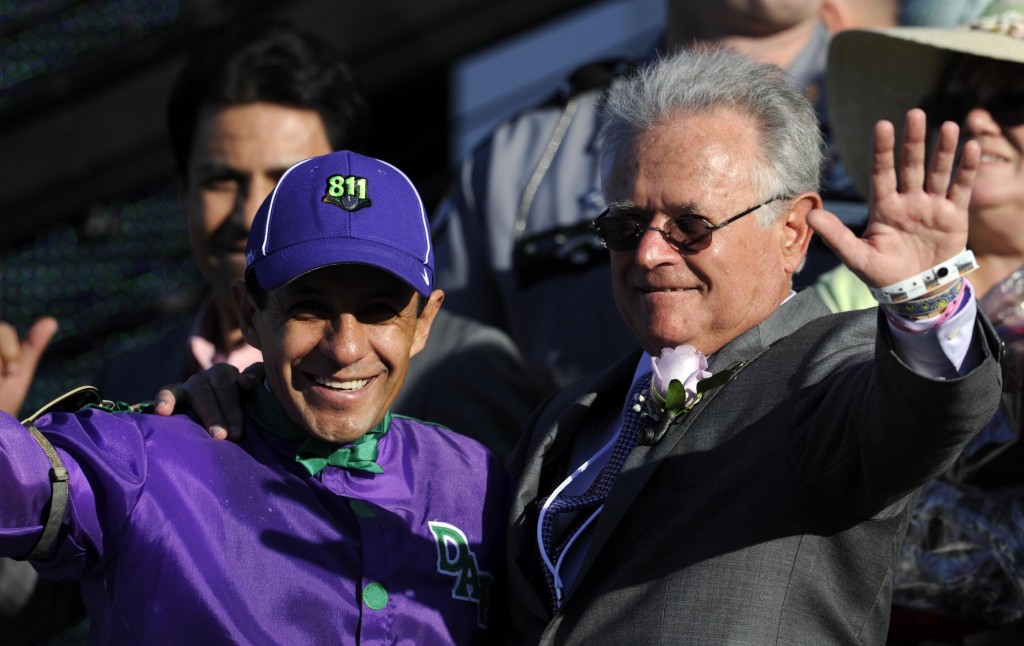
California Chrome’s Jockey, Victor Espinoza , used to train Jack asses and his trainer, Art Sherman, is the oldest winner in history of the Kentucky Derby. (Photo by: Jamie Rhodes/USA Today Sports)
They told Sherman they wanted him to train “our Derby horse” and explained they had a typed-up plan to get their horse to the big race. Sherman, who once moonlighted at the betting windows to help pay the bills, chuckled at their naiveté. After all, he had won more than 3,000 times as a jockey and a trainer, yet had never raced on or trained a Kentucky Derby horse.
In December, California Chrome won the King Glorious Stakes, followed by another victory in the California Derby Cup. Next, in the San Felipe Stakes, he faced open company, top-caliber horses from outside of California. With the pressure ostensibly mounting as post time approached, Coburn jauntily handed out purple hats with the donkey insignia and invited fans into the paddock area as they saddled up their horse and lifted Espinoza, the one-time donkey-riding jockey, atop California Chrome. The horse blazed to victory, after which Coburn passed out more purple hats and invited fans into the winner’s circle.
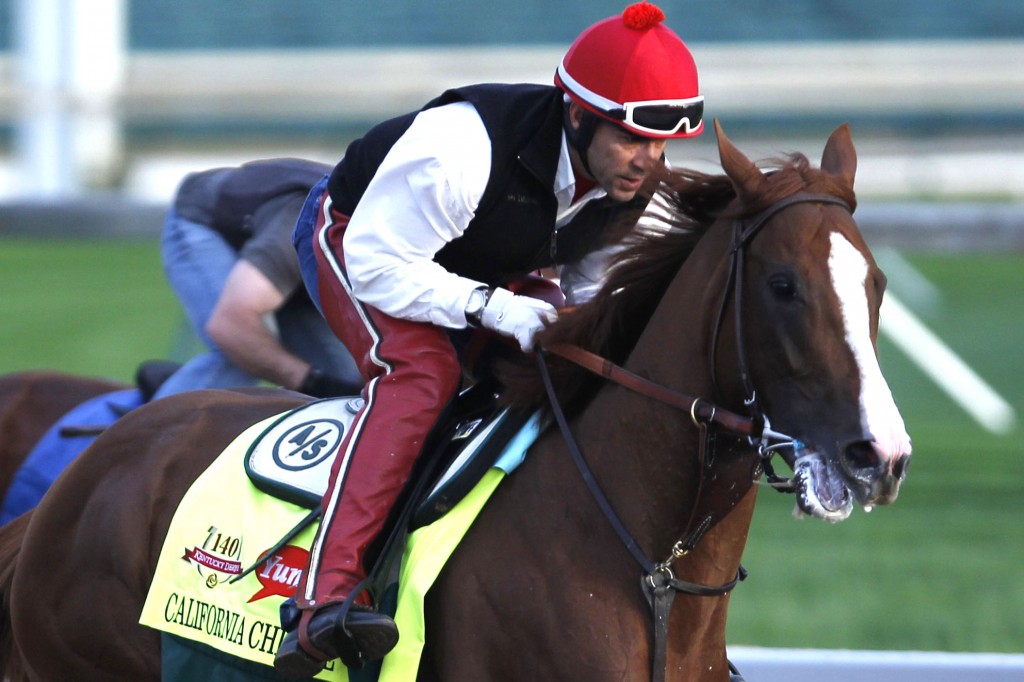
Photo by: UPI/John Sommers
Soon after, Martin and Coburn reported, they got an offer of $6 million for 51 percent control of California Chrome. They were vague in public about the details, with Coburn saying only that the offer came from the Middle East. Nevertheless, they were clear about their answer: “Hell no.”
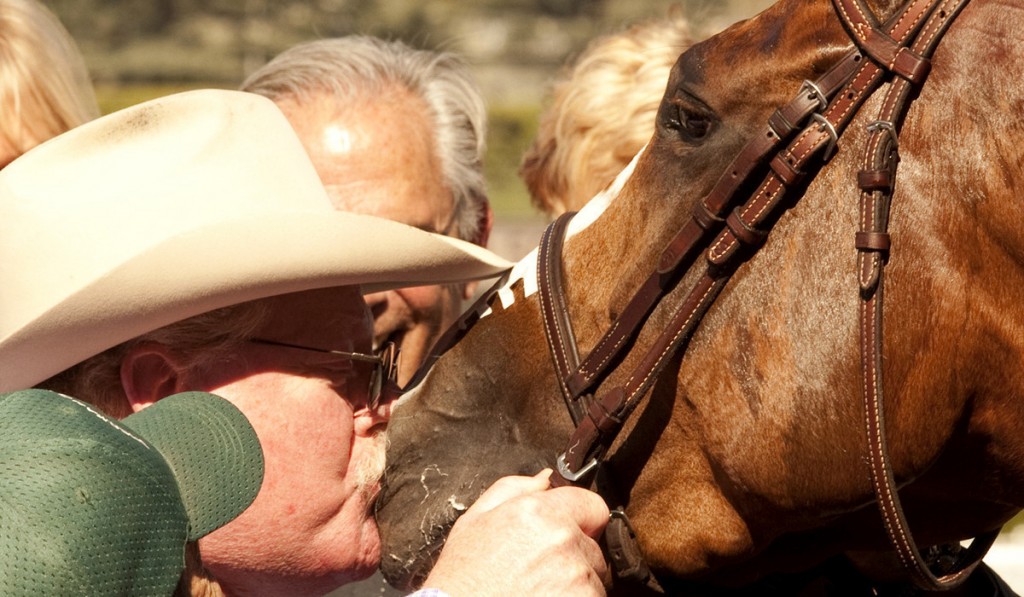
Photo by: APphoto_Santa Anita Horse Racing
In early April, when racing fans wondered if these first timers would match their horse against other Kentucky Derby hopefuls in the Santa Anita Derby, the answer was “Hell yes.” California Chrome romped to victory, giving him four consecutive victories by a combined 24 1/4 lengths, increased his earnings to $1,134,850 and stamped him as the favorite to win the Kentucky Derby.
This past week, while the blue-blood owners and their famous trainers stayed in $1,000-a-night rooms in downtown Louisville, Coburn, Martin and their wives stayed at the Hampton Inn in Frankfurt, an hour long drive from Churchill Downs racetrack. Coburn had announced to anyone who would listen that, on Saturday, they would collect $2 million and the red roses reserved for the Kentucky Derby winner. That is exactly what they did. It was redemption for a jockey who used to train “jack asses” (donkeys) it was redemption, for a slow-running filly-turned-mare and redemption for a couple of self-proclaimed dumb asses.
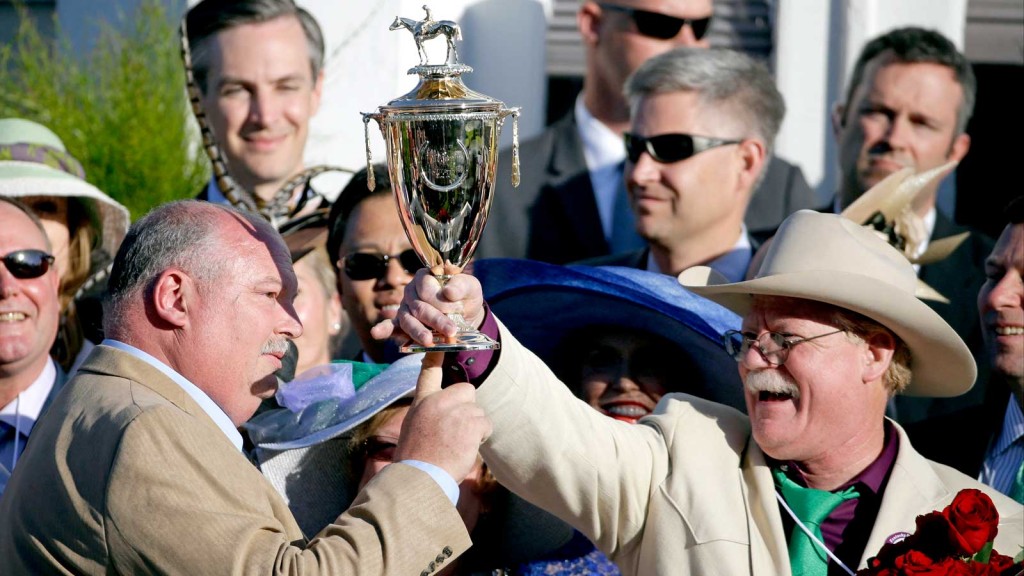
California Chrome owners Steven Coburn, right, and Perry Martin hold the trophy after Victor Espinoza rode California Chrome to victory in the 140th running of the Kentucky Derby horse race at Churchill Downs Saturday, May 3, 2014, in Louisville, Ky. (AP Photo/David Goldman)
The Bullvine Bottom Line
Today one of the significant differences between the thoroughbred horse industry and dairy cattle breeding is the use of genomics. Much of the breeding in the thoroughbred industry is still done by “gut feel” versus proven numbers. , That is why performance and track records for over 60 years have failed to improve. Where would horse racing be with a tool like genomics? Still, the heartwarming story of California Chrome, gives hope to dairy breeders, who are in it for the love more than money.
Get original “Bullvine” content sent straight to your email inbox for free.

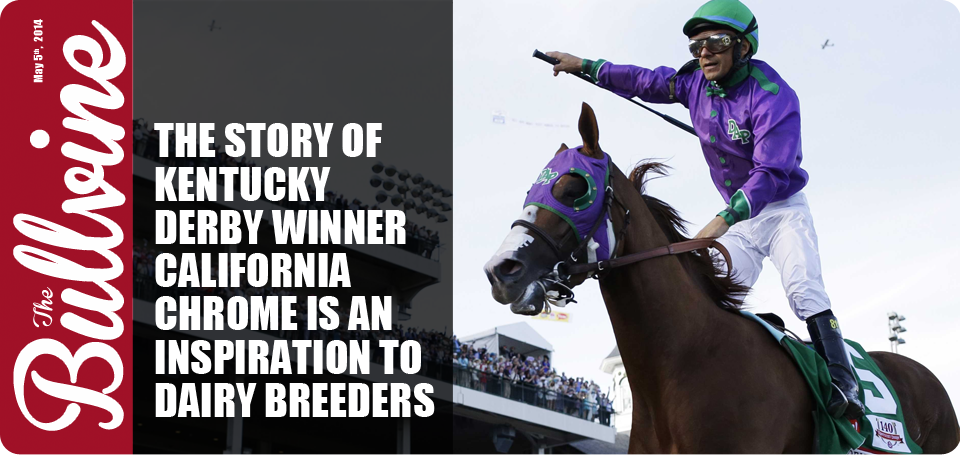






![2f79e05a86f1f91d5e453895bc09a086_crop_exact[1]](https://www.thebullvine.com/wp-content/uploads/2014/05/2f79e05a86f1f91d5e453895bc09a086_crop_exact1.jpg)











Leave a Reply
You must be logged in to post a comment.